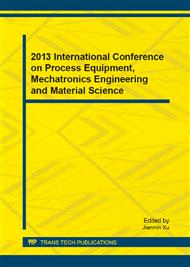p.595
p.600
p.604
p.608
p.612
p.617
p.622
p.626
p.631
A Novel Pre-Processing Approach of Point Cloud in Reverse Engineering
Abstract:
In reverse engineering, data pre-processing has played an increasingly important role for rebuilding the original 3D model. However, it is usually complex, time-consuming, and difficult to realize, as there are huge amounts of redundant 3D data existed in the gained point cloud. To find a solution for this issue, point cloud data processing and streamlining technologies are reviewed firstly. Secondly, a novel pre-processing approach is proposed in three steps: point cloud registration, regional 3D triangular mesh construction and point cloud filtering. And then, the projected hexagonal area and the closest projected point are defined. At last, a parabolic antenna model is employed as a case study. After pre-processing, the number of points are decreased from 4,066,282 to 449,806 under the constraint of triangular grid size h equaling to 2mm, i.e. about 1/9 size of the original point cloud. The result demonstrates its feasibility and efficiency.
Info:
Periodical:
Pages:
631-635
Citation:
Online since:
July 2013
Authors:
Price:
Сopyright:
© 2013 Trans Tech Publications Ltd. All Rights Reserved
Share:
Citation:


